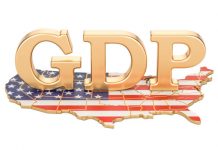Markets
Investors continued pondering how to cope with different aspects of the reflation trade. Rising yields and an astonishing commodity rally are a sign of optimism on the economic rebound, but might also became a source of volatility. European equities initially nosedived but reversed most of the losses. US indices showed a similar pattern with Nasdaq still underperforming (close -0.5%). US and European yields diverged. EMU yields reversed most of the decline incurred on Tuesday as ECB’s Lagarde warned the ECB was closely monitoring the rise in government bond yields. The market apparently isn’t convinced on the ECB’s ability to shield European interest rate markets from the broader yield rise. German yields rose between 0.4 bp (2-y)and 2.8 bp (30-y). In the US, consumer confidence beat expectations. Surprisingly this was due to a better the current situation while expectations deteriorated. However, at that time the market focus turned to Fed Powell’s Testimony before the Senate. The Fed Chair didn’t change tack. He acknowledged better times ahead, but it will take time to make progress to meet the inflation and employment goals. He also downplayed the risks of higher inflation whether due to fiscal stimulus or to pent-up demand as the vaccinations are further rolled out. Powell’s speech had only a modest impact on US bonds. Yields closed mixed with the 5-y declining 3.25 bp but the 30-y rising 0.7 bp. The US 10-y real yield eased 3.5bp, maybe as Fed tapering is still some time away. No clear moves in the dollar. EUR/USD held a tight range in the mid 1.21 area. Sterling extended its rally with EUR/GBP closing below the 0.8621 support (0.8608).
This morning, Asian equities are falling prey to profit taking. Hong Kong underperforms on plans to raise a stamp duty in equity trading. The commodity rally shows tentative signs of taking a breather. On other markets, the dollar is little changed (EUR/USD 1.2150 area/DXY 90.13). Remarkably, the sterling short-squeeze even accelerates, with EUR/GBP falling below the 0.86 handle. Cable is changing hands in the mid 1.4150 area.
Only second tier data are scheduled in Europe and the US today. Fed Chair Powell will give the second part of its testimony before the US House Services Panel. Fed Brainard and Clarida are also scheduled to speak. The US Treasury will sell $61 of 5-year Notes. Fed’s Powell committing to maintain current policy stance and tentative slowdown in the commodity and equity rally might also cause a pause in the steeping trend on global interest rate markets. Even so, we don’t expect any correction to go very far as long as the reopening narrative isn’t questioned in any profound way. The dollar remains subject to conflicting influences (tentative rise in volatility versus a slowdown of recent rise in US real yields). 1.2190 remains first nearby resistance for EUR/USD. A break would signal some USD softness but recent attempts were unconvincing. EUR/GBP this morning tested the 0.8570 support (76% of Feb/March sterling sell-off). The pair is moving well in oversold territory (sterling overbought), but for now there is no obvious trigger fight the narrative on an (hoped for) accelerated opening of the UK economy.
News Headlines
Hong Kong plans a much lower deficit in the coming fiscal year with the economy expecting to recover (3.5-5.5% growth foreseen this year) from its longest recession on record, Finance Secretary Chan said in the 2020-2021 budget speech. To support the rebound, HK pledges HK120$bn of fiscal aid that includes HK$5000 spending vouchers. On the government income side, HK proposes raising the stamp duty on stock trading.
The New Zealand central bank kept policy rate stable at 0.25%, maintained the size of its bond buying programme at NZ$100bn and kept conditions of its Funding For Lending programme unchanged. The central bank upgraded the outlook with growth really picking up from the second half this year. Nevertheless, governor Orr struck a cautious note, saying the central bank is prepared to provide more stimulus if necessary. This could include a lower or even negative policy rate. The kiwi dollar isn’t impressed and advances to the highest level since 2018 (NZD/USD at 0.737).












